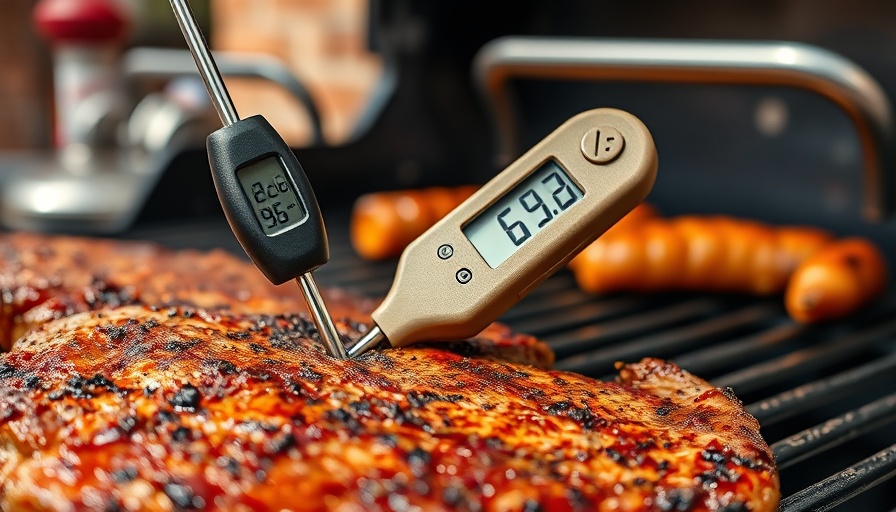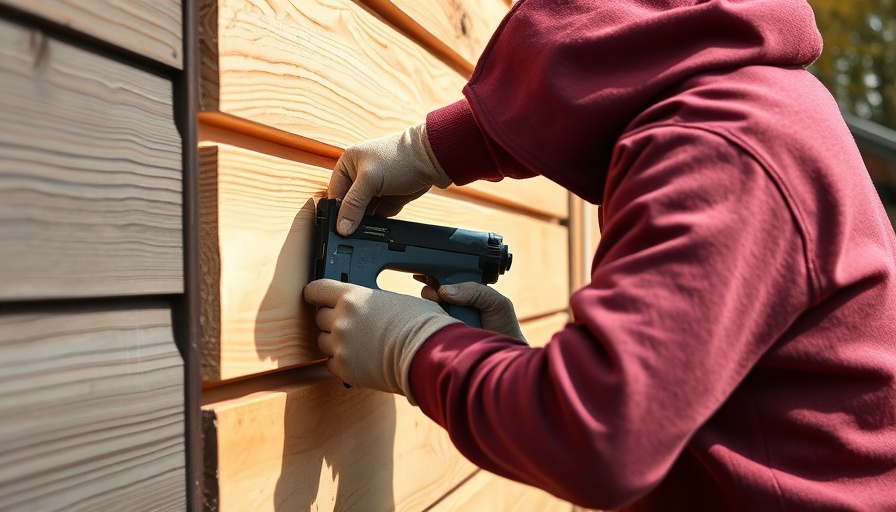
Why Accurate Temperature Matters in Grilling
Grilling is a revered culinary technique that can transform a simple cookout into a gastronomic delight, but it all hinges on the precision of temperature control. Homeowners who wish to impress guests or simply savor a well-cooked meal recognize that a perfectly executed steak or chicken can hinge on just a few degrees. The art of grilling blends science with technique, making the best wireless grill thermometers essential for precision cooking.
The Evolution of Wireless Grill Thermometers
In 2025, the evolution of wireless grill thermometers has reached new heights. Today's models not only offer Bluetooth or Wi-Fi connectivity, allowing you to monitor your food from a distance but they've also integrated smart technology that keeps home chefs informed. This includes real-time tracking, notifications to adjust cooking methods, and even the ability to manage multiple cooking items simultaneously. For homeowners, this means spending less time hovering over the grill and more time enjoying gatherings with friends and family.
How to Choose the Right Wireless Grill Thermometer
Deciding which wireless grill thermometer is the best fit for your grilling needs can be challenging. Here are critical features to consider:
- Multiple Probes: At least two probes allow you to monitor different meats or the grill temperature simultaneously.
- Strong Wireless Range: Ensure your model connects effectively over longer distances, allowing you to move around the house.
- Fast and Accurate Readings: A quality thermometer should provide temperature data within 1-2 seconds.
- App Integration: Consider models that offer user-friendly apps for tracking temperatures and settings remotely.
- Long Battery Life: Rechargeable batteries can minimize interruptions during cooking.
- Durability: Choose materials that can withstand the high heat of grilling without damage.
Top Wireless Grill Thermometers to Consider
When it comes to precision in grilling, here are some of the best wireless grill thermometers recommended for 2025:
- Typhur Sync Gold: Touted as the best overall smart thermometer, it epitomizes ease of use and reliability.
- Weber iGrill 2: This device is known for its exceptional app functionality and sleek design.
- MEATER Plus: A favorite for its unique features that include wireless connectivity and a simple setup.
- ThermoPro TP20: Acclaimed for its accuracy and wide range, making it perfect for all grilling styles.
- GrillEye Max: Known for intuitive controls and exceptional durability.
Each of these models has been chosen based on detailed user feedback and technical specifications, ensuring you’ll find one that fits your grilling style and needs.
Next Steps for the Engaged Griller
If you’re serious about enhancing your grilling game, now is the time to invest in a wireless grill thermometer. Not only do these tools simplify the cooking process, they’ll also elevate the overall dining experience you can provide for your family and friends, ensuring consistently delicious results.
With the advancements in technology, it’s easier than ever to grill with confidence, delivering perfectly cooked meals every time. So, upgrade your grilling tools, and enjoy the art of cooking with precision!
 Add Row
Add Row  Add
Add 



Write A Comment